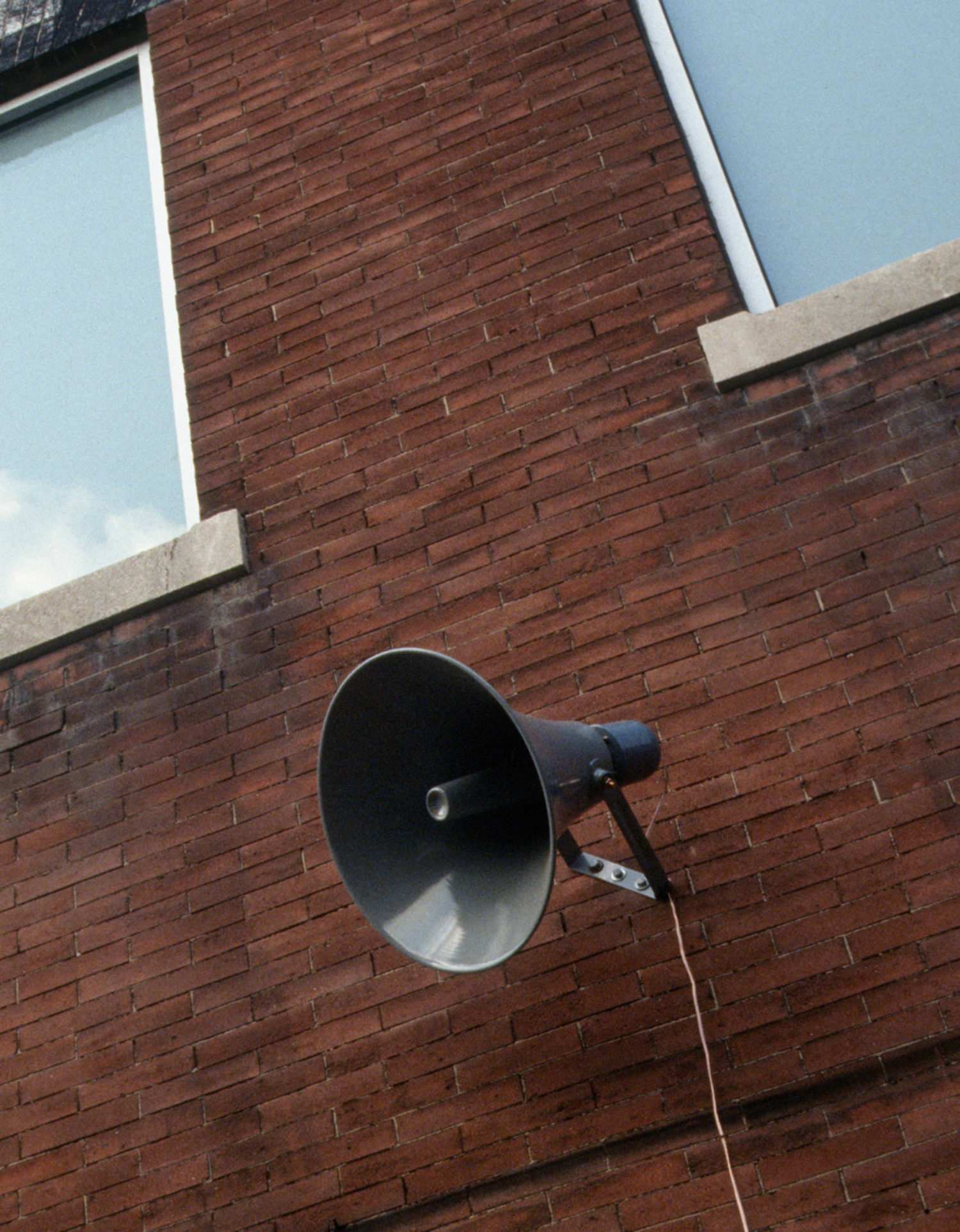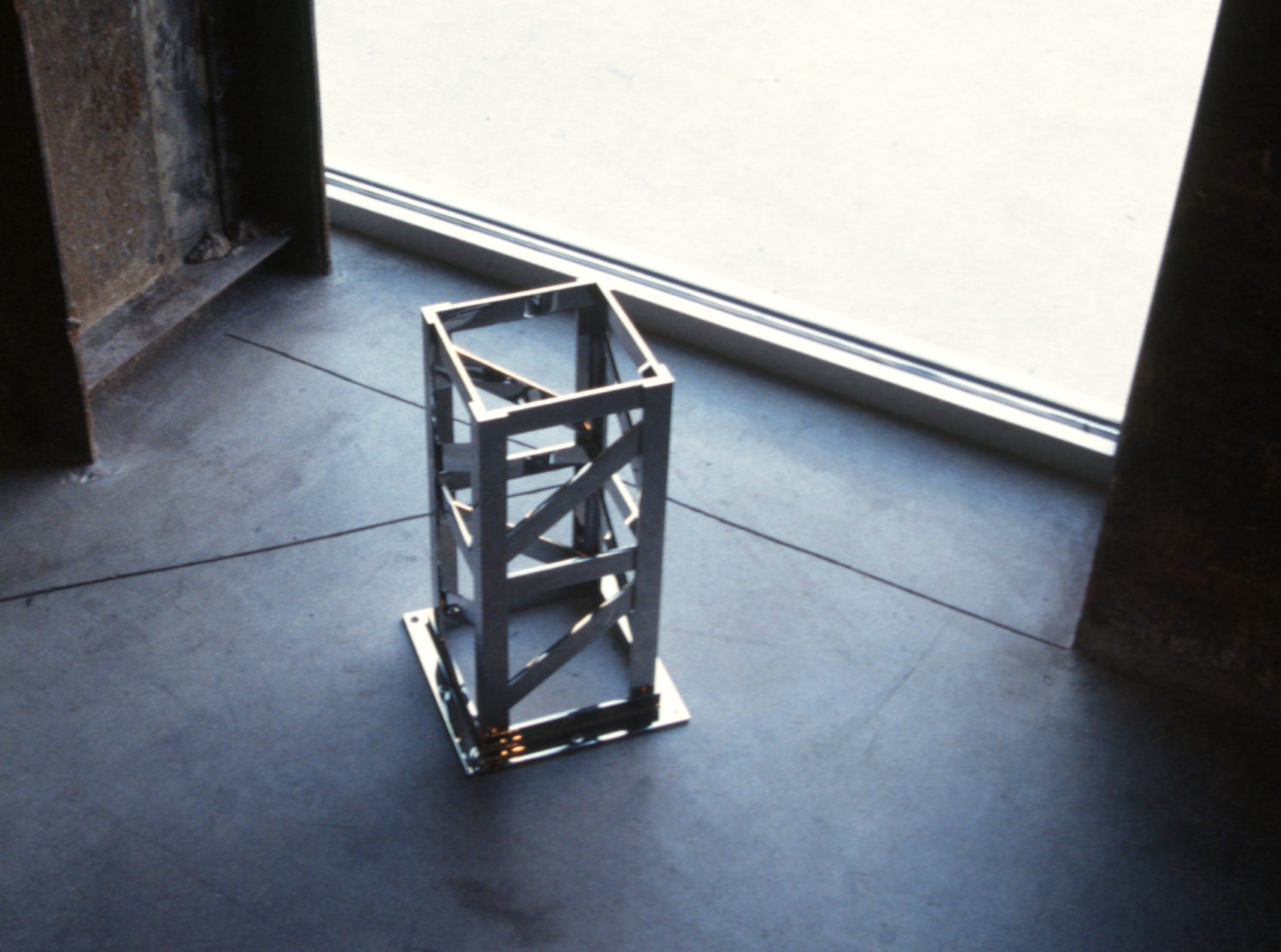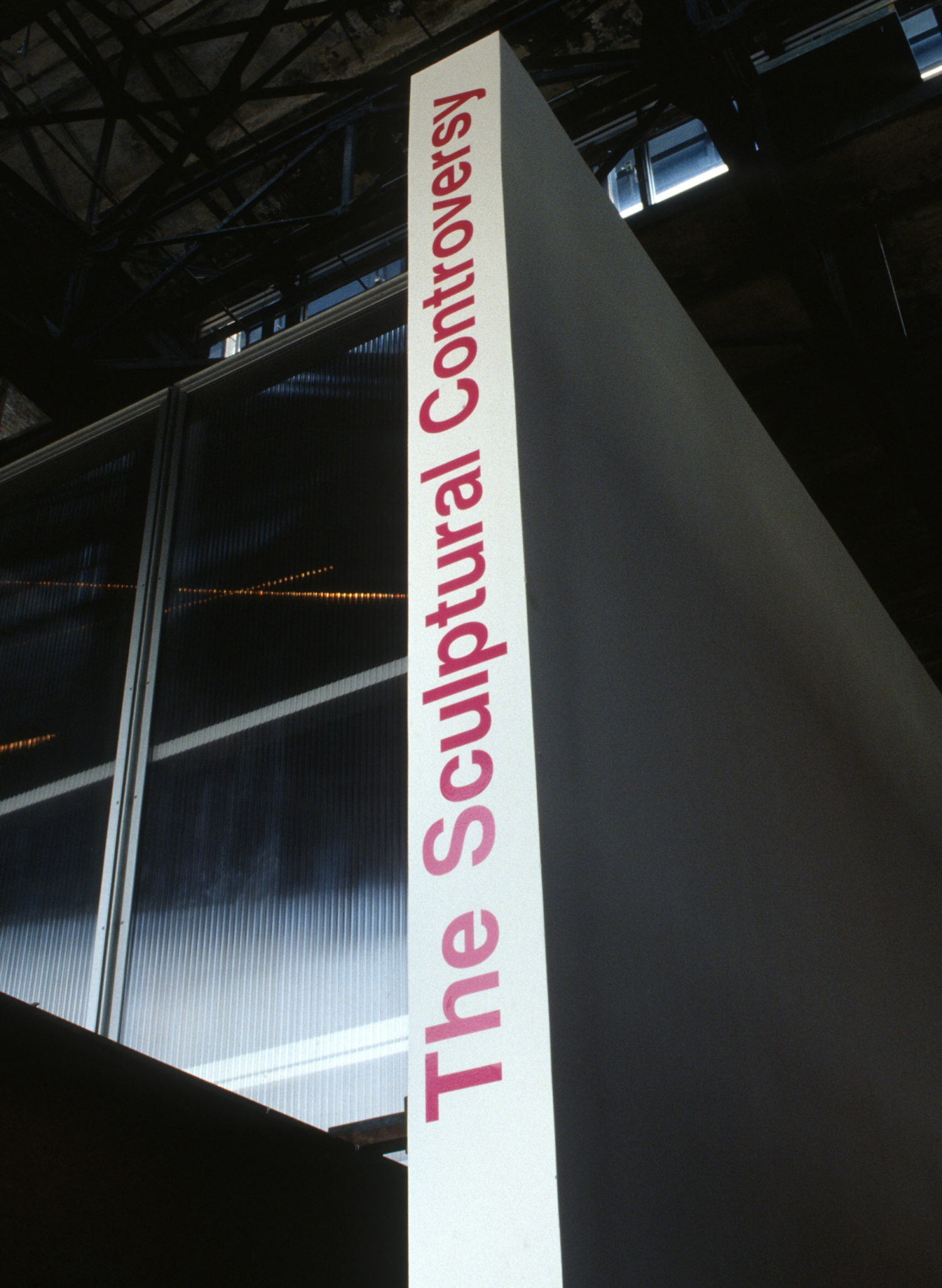
audio, PA speaker, playback system
52:35 minutes
Installation view

audio, PA speaker, playback system
52:35 minutes
Installation view

fabricated and polished stainless steel and screws
18” x 12” x 12”
installation view

fabricated and polished stainless steel and screws
18” x 12” x 12”
installation view

wall graphic 10″ x 97″ vinyl signage
installation view with posters

wall graphic 10″ x 97″ vinyl signage
installation view

18” x 24”
Edition: 100
Offset-litho
The audio is continuously played and is comprised of a spoken word version of Jacques Derrida’s lecture from 1966, titled Structure, Sign, and Play in the Discourse of the Human Sciences.
Treble
The Sculpture Center LIC, NY
Curated by Regine Basha
Participating artists include; Francis Alÿs + Rafael Ortega, Joseph Beuys, Grady Gerbracht, Joseph Grigely & Amy Vogel, Erik Hanson, Jim Hodges, Jorge Macchi, Euan MacDonald, Emmanuel Madan, Terry Nauheim, Max Neuhaus, Cornelia Parker, Andrea Ray, Dario Robleto, Steve Roden, David Schafer, Jude Tallichet, Mungo Thomson, Brad Tucker, Anton Vidokle & Cristian Manzutto, Stephen Vitiello, and Paulo Vivacqua
General Theory was installed in the entrance lobby and on the front of the Sculpture Center in Long Island City. The signage, speaker, and posters are mounted on existing walls that are part of the architecture that separates the gallery from the offices and front receiving desk. Utilizing and expanding on the ambience of the commercial lobby, General Theory incorporates large signage, sound, advertisements, and architectural display. General Theory is built around a voice audio track titled General Theory: Lecture #1 that is emitted through a PA speaker. Its visual presence is prominent while a recorded spoken word is reciting a speech that was given by Jacques Derrida in 1966 originally at the Johns Hopkins University during a symposium on the human sciences. The title of his lecture “Structure Sign and Play in the Discourse of the Human Sciences” continues to this day, to be an early and influential theoretical text expressing ideas that pertain to Metaphysics, Deconstruction, and the concept of ‘center’. The audio is continuous and reflects a ‘piped in’ quality or suggests ‘background’ narration. Derrida’s ideas pertaining to the ‘de-centering’ of the subject have over the last few decades been theoretically applied to many other genres of production including architecture and sculpture.
General Theory is a humorous play on the notion of ‘center’ and Deconstruction, including the idea of the Sculpture Center itself as an institution basing itself on the subject of sculpture, whose notion of center has also been contested by art historians and theorists. The content and spoken word, heard out of context from the scholarly event, become a parody as it enters into the mainstream, or more literally the street through the cultural institution. The Sculpture Center, as its name states, is a center that brings together art that associates itself with the idea of sculpture and uses the word center in it’s own title. The book that first published the lecture by Derrida is titled “The Structuralist Controversy” which shares usage of the letters ‘S’ and ‘C’ as well as the usage or exchange of the words ‘center’ and ‘controversy’. The wall graphic titled General Theory: Expo Wall Graphic, is comprised of vinyl lettering and is adhered to a tall narrow wall adjacent to the lobby of the Sculpture Center. Its layout and application reinforce the designed exhibition style usually associated with expos and trade fairs marketing ideas into popular culture. The sculpture General Theory: Expo Column, an 18-inch tall polished stainless steel structure resembling a base of a column or short tower is bolted to the floor. The Expo Column is associated with the optimism of Modernism, the idea of the future, or the beginning of new architectural program.
The ‘physical’ site of the Sculpture Center is important as is its ‘ideological’ site pertaining to the subject of sculpture. The idea of (a) sculpture center, as well as the idea of the (sculptures’) center–as discussed by Krauss, it is her post-structural attack of modernist sculpture that also functions as a site here too. There is a play between, the sites of sculpture, notions of center, Curly, and Derrida. The poster, General Theory: Lecture and Expo Poster is a portrait of Curly from the Three Stooges comedy trio. His facial expression and gesture is one of a thinker, with his head resting on his closed fist. The Three Stooges and especially Curly can be seen as a kind of ‘other’ as well as an icon of slapstick comedy. Curly is an important participant in the play of sites and locations as he brings with him many other relationships. Curly can be seen as a representation of male hysteria, generating chaos as he traffics within the collapse of rationalism and into disorder. General Theory is set up for numerous and potential misreading and slippages, ambiguous or layered relationships. There is perhaps the misreading that the poster could be a promotional ad for the entire show, or that the sign on the wall may be the title of the exhibition. The sculptural component may not have any obvious relationship to the speech and it may appear to be just an object out of place, and Curly may be construed as Derrida.